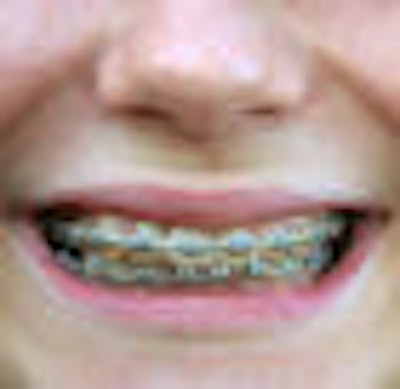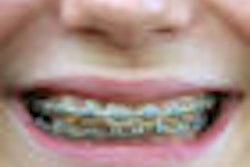
White-spot lesions (WSLs) are a source of ongoing frustration for many orthodontists and patients. While a number of solutions are at the disposal of an orthodontist, are any of them truly effective?
A new systematic review examined the impact one popular treatment approach -- remineralizing agents -- has on WSLs (American Journal of Orthodontics and Dentofacial Orthopedics, March 2013, Vol. 143:3, pp. 376-382.e3).
While several randomized clinical trials have studied the effects of remineralizing agents on postorthodontic WSLs, this is the first systematic review of the results, noted the study authors, from the Fourth Military Medical University and the People's Hospital of Gansu Province in China. They thus set out to assess the evidence regarding the effect of remineralizing agents on postorthodontic WSLs and evaluate which remineralizing agents are effective for treating WSLs after orthodontic treatment.
Their review included the following:
- Randomized controlled clinical trials
- Studies in which patients had at least one clinically visible WSL after completing fixed orthodontic treatment
- Studies in which postorthodontic WSLs were treated with remineralizing agents
- Studies that had a control group that was subjected to treatment agents or given a placebo or no intervention
- Studies in which a change in severity of the WSL was observed in the experimental versus the control group as the primary outcome
The researchers scoured PubMed, Ovid Medline, Web of Science, and the Cochrane Library for studies published from as far back as 1946 to mid-2012.They also assessed the risk of bias and methodologic quality of each, and recorded the number of patients involved, as well as other descriptive and quantitative data.
Overall, the researchers turned up 642 unique citations, of which 45 studies were considered relevant. From these, seven studies were finally considered eligible: Three randomized controlled trials evaluated the effects of three fluoride preparations: 50-ppm sodium fluoride mouth rinse, 5% sodium fluoride varnish, and 0.5% sodium fluoride chewing sticks. The remaining four studies compared the effects of remineralizing agents containing casein phosphopeptide-amorphous calcium phosphate (CPP-ACP) with or without fluoride. Two had a fluoride control; two used an inactive control.
Methodology flaws
The researchers found fault in the methodology of all the included studies and mixed results in treating WSLs. In one study, 50 ppm of fluoride was used to treat WSLs and the reduction in size was insignificant relative to a control. However, when they were treated with fluoride varnish and fluoride chewing sticks in two other studies, respectively, both found that the treatment had a significant impact on WSLs when assessed with a Diagnodent (KaVo) and compared with a control.
A fluoride treatment group outperformed a casein phosphopeptide amorphous calcium phosphate treatment group in one study. In fact, three failed to find significant effects of low fluoride and casein phosphopeptide-amorphous calcium fluoride phosphate for reversing WSLs, the researchers noted, while acknowledging that a larger sample size could have potentially helped find differences.
Ultimately, "the evidence is insufficient to support the effectiveness of fluoride for the remineralization of postorthodontic WSLs" despite its accepted ability to remineralize enamel, the researchers wrote. "There is a lack of reliable evidence to support the effectiveness of remineralizing agents for the treatment of postorthodontic white-spot lesions."
The study authors emphasized the need for additional studies with strict eligibility criteria, a combination of specific and sensitive detection methods, and reliable statistical analyses. There is a clear need for such studies because WSLs appear in as many as 61% of cases after debonding of dental arches from tooth surfaces and may last for as long as five to 12 years, they added.
"I think the bottom line of this study is that we need more randomized controlled trials looking at specific remineralizing agents," wrote Ahmad Hamdan, PhD, of the department of orthodontics at the Virginia Commonwealth University School of Dentistry in an email to DrBicuspid.com. Dr. Hamdan has participated in published studies involving WSLs (Journal of the American Dental Association, July 1, 2012, Vol. 143:7, pp. 777-783).
However, dentists should not be daunted by the researchers' conclusions, he added. "I am not aware of one remineralizing agent that is superior to another," he wrote, "but I think that orthodontists should use these agents not only in patients who show signs of WSLs, but also as a preventive measure. I do not think that just because we still don't have the research to prove that these agents work we should abandon them."
As is so often the case, patient education and call to action can be the best preventive measures, Dr. Hamdan noted.
"I think that we need to keep our patients and their parents informed that WSLs are a real risk of orthodontic treatment and that their son or daughter has a 50% chance of developing WSLs after orthodontic treatment," he wrote. "We need to make sure that patients see their general dentist regularly, and we need to spend time with patients re-enforcing the importance of good oral hygiene."



















